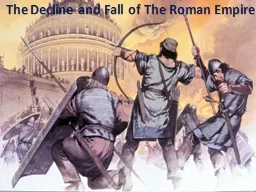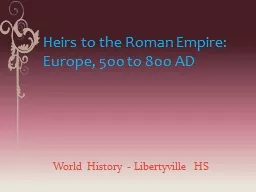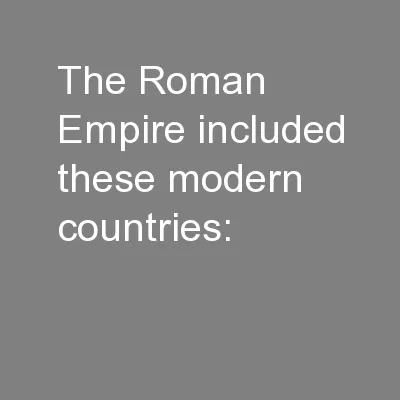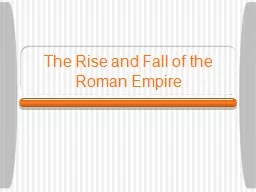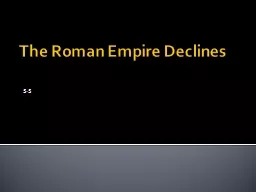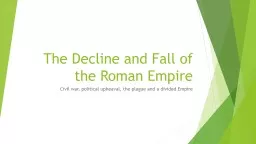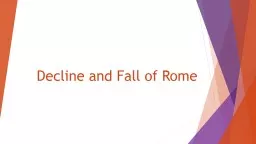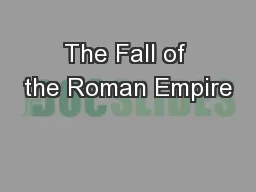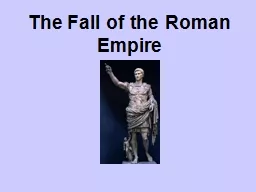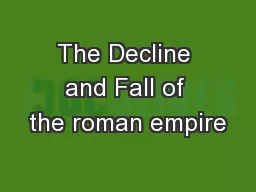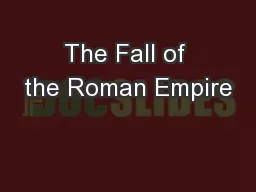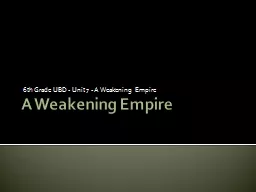PPT-The Decline and Fall of The Roman Empire
Author : karlyn-bohler | Published Date : 2016-05-16
Preview of This Weeks Lessons A What were the main problems facing Rome after the Pax Romana B What reforms did Emperors Diocletian and Constantine make to
Presentation Embed Code
Download Presentation
Download Presentation The PPT/PDF document "The Decline and Fall of The Roman Empire" is the property of its rightful owner. Permission is granted to download and print the materials on this website for personal, non-commercial use only, and to display it on your personal computer provided you do not modify the materials and that you retain all copyright notices contained in the materials. By downloading content from our website, you accept the terms of this agreement.
The Decline and Fall of The Roman Empire: Transcript
Download Rules Of Document
"The Decline and Fall of The Roman Empire"The content belongs to its owner. You may download and print it for personal use, without modification, and keep all copyright notices. By downloading, you agree to these terms.
Related Documents

